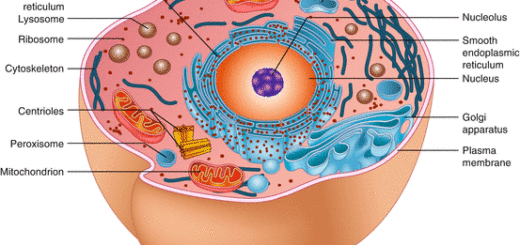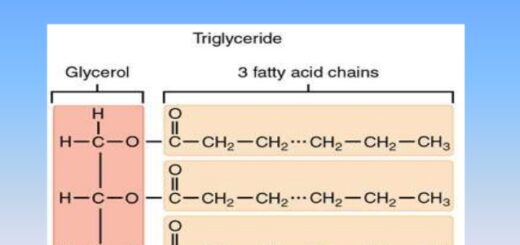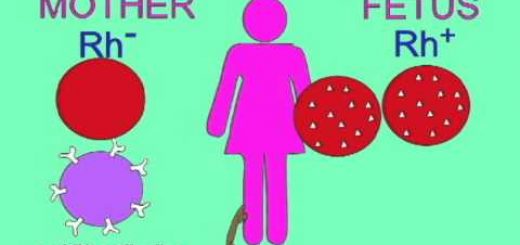Causes of disease and death in plant, Methods of immunity (Structural immunity & Biochemical immunity)
The life of any living organisms is exposed to continuous threats either from Biological sources (such as pathogens including some insects, animals, protozoa, fungi, bacteria and viruses), Non-biological sources (such as accidents, natural disasters and disturbance of the surrounding elements of the environment).
Therefore, living organisms are in continuous conflict with life-threating dangers, and so every kind of living organisms develops defence mechanisms to survive, from these mechanisms:
- Changing of colour for camouflage.
- Secretion of toxins to kill other organisms (enemies).
- Running to escape.
So, God has endowed these organisms elaborate methods of defence, and these methods are always changing to face the different methods of the enemy.
Immunity
Immunity is the ability of the body to resist pathogens and foreign bodies through the immune system, whether by preventing the entry of them into the body of the living organism or by attacking and destroying them when entering the body of the organism.
The immune system works according to two systems, which are:
- Innate immunity.
- Acquired (Adaptive) immunity.
These two immune systems work in cooperation and coordination with each other, As innate immunity is essential for the acquired immunity to work successfully and vice versa, This correlation allows the body to act with pathogens.
Immunity in plant
The causes of disease and death in plant
The causes of disease and death in plants are limited to three main causes, which are:
- Dangerous enemies such as grazing animals, insects, fungi, bacteria, viruses….etc., They often cause severe damages that lead to destroying the life of the plant or causing dangerous diseases.
- Unsuitable conditions, Example: high temperature, Excessive cold, Increase or decrease in the amount of water, Deficiency of nutrients, unsuitable soil ….etc., They can be avoided or treated by demise their causes, although some elements of the toxic substances may be lethal to the plant.
- Toxic substances such as smoke, Toxic fumes, Insecticides, untreated sewage, flowing substances from factories to the rivers, and Irrigation water, They can be avoided or treated by demise their causes, although some elements of the toxic substances may be lethal to the plant.
The methods of immunity in plant
Plants defend themselves against pathogens through two ways: Structural immunity and Biochemical immunity.
Structural immunity includes:
- Pre-existing structural defences that represented by Epidermal cells of the plant surface and cell wall.
- Induced structural defences that represented by cork formation, formation of tyloses, Deposition of gums, Cellular immune structures, Getting rid of injured tissue (hypersensitive response).
Biochemical immunity represented by:
- Receptors that recognize the presence of pathogen and activate the plant defences.
- Antimicrobial chemicals.
- Antimicrobial proteins.
- Inducible post-infection.
Structural immunity
The plants defend themselves against pathogens through the achievement of some mechanisms through their own structures, which known as the structural immunity.
Structural immunity is the natural barriers (structures) that act as the first line of defence to prevent the pathogens from entering and spreading inside the plant, Structural immunity includes two types, which are pre-existing structural defences and induced structural defences.
Pre-existing structural defences
Epidermal cells of the plant surface: The epidermis acts as the first bulwark in the resistance of the pathogens, As it is characterized by the presence of some structural defences that cover the epidermis, such as:
- Waxy layer: forming water-repellent surface, So, the water does not settle on the surface, therefore the suitable environment for the growth of fungi and reproduction of bacteria is not available.
- Hairs or thorns: that avoid the accumulation of water to decrease the chance of infection with diseases and avoid being eaten by grazing animals.
Cell wall: It represents the outer protection of the cells, especially the epidermal layer, As it consists mainly of cellulose and after thickening by lignin becomes rigid, So, it will be difficult to be penetrated by the pathogens.
Induced structural defences
Cork formation: The cork layers are formed to isolate the plant areas exposed to cut or tear, which prevent the entry of the pathogen to plant.
Causes of cutting or tearing areas in the plant:
- Increasing in the thickening of the plant during its growth.
- The collection of fruits.
- The fall of leaves in the autumn.
- The human or animal encroachment.
Formation of tyloses: Tyloses are overgrowths of the protoplast of adjacent living parenchymatous cells which protrude into xylem vessels and tracheids through pits, Tyloses are formed as a result of exposure of the vascular system to cut or invasion of pathogens, They obstruct the movement of pathogens to the other parts of the plant.
Deposition of gums: The infected plants by wounds or cuttings secrete the gum within the cells surrounding the locus of infection to prevent the entry of microbes inside the plant through the cutting or tearing parts.
Cellular immune structures: They are some morphological changes that occur as a result of the pathogens invasion.
Examples:
- Swelling the cell wall of epidermal cells and the cells under the epidermis during the direct penetration of the pathogen, leading to inhibition of the penetration process through those cells.
- Surrounding the mycelium which attacks the plant with an insulator cover to prevent the transmission of fungus from a cell to another.
Getting rid of the injured tissue (hypersensitive response): The plant gets rid of the pathogen, thus the plant kills some tissues to prevent the pathogen from spreading to the surrounding tissues, so, the plant can get rid of the pathogen by the death of injured tissue.
Biochemical immunity
Biochemical immunity is the responses of the plant to secrete chemical compounds against pathogens, The biochemical immunity includes the following mechanisms:
Receptors that recognize the presence of pathogen and activate the plant defences: They are compounds found in healthy and infected plants, but their concentration increases in the plant after infection, They Recognize the presence of pathogens & they stimulate the innate immune system in the plant.
Antimicrobial chemicals: They are chemical compounds secreted by the plant to resist pathogens and they may be found already in the plant before the infection and they may be formed due to the infection (they are formed after attacking the pathogen to plant).
Examples:
- Phenols and glycosides: They are toxic chemical compounds that kill the pathogenic organisms, such as bacteria or inhibit their growth.
- Non-protein amino acids: These acids don’t enter in the structure of proteins in the plants, but they act as protective substances for the plant, where they include toxic chemical compounds to the pathogens, for example: canavanine and cephalosporin.
Antimicrobial proteins: Some plants produce proteins that were not present in the plant, but produced as a result of infection, They react with the toxins produced by the pathogenic organisms and change them into a non-toxic compounds for the plants such as detoxifying enzymes that are often produced by the plants to interact with the toxins produced by pathogens and invalidate their toxicity.
Inducible post-infection: Some plants promote and strengthen their defences after the infection, in order to protect themselves from any new infection by the presence of chemical compounds that are formed after infection.
From the previous, we can compare between Structural immunity and Biochemical immunity.
Structural immunity
Natural barriers (structures) that act as the first line of defence to prevent the pathogens from entering and spreading inside the plant, It includes two types, which are:
- Pre-existing structural defences that represented by Epidermal cells of the plant and Cell wall.
- Induced structural defences resulting as a response of an infection, which represented by cork formation, Formation of tyloses, Deposition of gums, cellular immune structures, Getting rid of the injured tissue (hypersensitive response).
Biochemical immunity
Responses of the plant to secrete chemical compounds against pathogens, It includes many mechanisms, which are:
- Receptors that recognize the presence of pathogen and activate the plant defences.
- Antimicrobial chemicals, such as Phenols and glycosides and non-protein amino acids.
- Antimicrobial proteins, such as detoxifying enzymes.
- Inducible post-infection.
The role of human in protecting the plant against pathogens:
Due to the importance of plants to human, so, human uses methods and introduces means to protect plant from diseases, such as:
- Using herbicides to protect the plant from harmful weeds.
- Struggling with insects in different ways.
- Stimulating the plants to resist plant diseases and it is known as acquired immunity.
- Producing strains of plants resistant to diseases and insects through plant breeding and using genetic engineering.
The activation compounds of protection and resistance can transfer from one cell to another in a regular manner through the transport system in the plant which corresponds to the blood vessels in animals.
Childbirth, lactation, types of twins, problems related to childbearing & gametes banks
Human immune system, Functions & Structure of the lymphatic system in human













